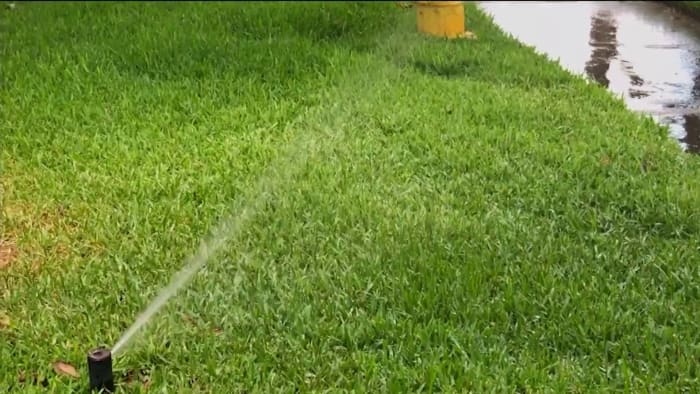OUC to drill deeper into aquifer to meet growing demand for water
OUC to drill deeper into aquifer to meet growing demand for water WKMG News 6 & ClickOrlando


Orlando Utilities Commission Approves $155 Million Project for Sustainable Water Supply

ORLANDO, Fla. – The Orlando Utilities Commission (OUC) has recently approved a $155 million project aimed at ensuring the region’s growing population has access to sufficient safe and clean drinking water for years to come.
Addressing Water Supply Challenges with Sustainable Solutions
OUC plans to construct a 40,000-square-foot water treatment plant on a 15-acre site in Lake Nona. The plant will utilize drilling technology to access an untapped source of brackish groundwater from the Lower Floridan Aquifer. This innovative approach will help diversify the water supply and ensure long-term sustainability.
Utilizing Reverse Osmosis for Water Treatment
Brad Jewell, OUC’s director of water production, explained that the water extracted from the lower depth is more minerally concentrated. To ensure its quality, the water will undergo reverse osmosis treatment before being distributed to OUC’s 400,000 customers. This process involves pumping the water through a filter to obtain clean water, which will then be treated with ozone, chlorine, and fluoride.
Minimal Environmental Impact and Future Water Security
Jewell emphasized that the project will have minimal environmental impacts on the springs in the area. By tapping into this untapped source of brackish groundwater, OUC will be able to meet the water demands of the growing population until the year 2045. This aligns with the Sustainable Development Goal 6: Clean Water and Sanitation, which aims to ensure availability and sustainable management of water and sanitation for all.
Construction Timeline and Customer Participation
Construction of the new facility, named the Southeast Reverse Osmosis Water Treatment Plant, is scheduled to commence by the end of 2025. OUC anticipates that it will be fully operational by 2033. In the meantime, Jewell encourages customers to conserve water and participate in the City of Orlando’s reclaimed water program, as approximately half of OUC’s water is used for irrigation.
Conclusion
The Orlando Utilities Commission’s $155 million project demonstrates its commitment to ensuring a sustainable water supply for the region. By leveraging innovative technologies and adopting environmentally-friendly practices, OUC is contributing to the achievement of the Sustainable Development Goals, particularly Goal 6: Clean Water and Sanitation. Through this project, OUC aims to meet the water needs of the growing population while safeguarding the environment and promoting long-term water security.
SDGs, Targets, and Indicators
-
SDG 6: Clean Water and Sanitation
- Target 6.1: By 2030, achieve universal and equitable access to safe and affordable drinking water for all.
- Target 6.4: By 2030, substantially increase water-use efficiency across all sectors and ensure sustainable withdrawals and supply of freshwater to address water scarcity.
- Indicator 6.1.1: Proportion of population using safely managed drinking water services.
- Indicator 6.4.1: Change in water-use efficiency over time.
Analysis
The article discusses the Orlando Utilities Commission’s (OUC) plan to build a water treatment plant to ensure a sufficient supply of safe and clean drinking water for the region’s growing population. This directly relates to SDG 6: Clean Water and Sanitation, which aims to ensure access to clean water and sanitation for all.
The specific targets under SDG 6 that can be identified based on the article’s content are:
- Target 6.1: By 2030, achieve universal and equitable access to safe and affordable drinking water for all.
- Target 6.4: By 2030, substantially increase water-use efficiency across all sectors and ensure sustainable withdrawals and supply of freshwater to address water scarcity.
The article mentions that the new water treatment plant will provide enough safe drinking water until the year 2045, indicating progress towards achieving Target 6.1. Additionally, the article highlights the use of reverse osmosis to treat the water and mentions minimal environmental impacts, suggesting efforts towards achieving Target 6.4.
The indicators mentioned or implied in the article that can be used to measure progress towards the identified targets are:
- Indicator 6.1.1: Proportion of population using safely managed drinking water services.
- Indicator 6.4.1: Change in water-use efficiency over time.
The article mentions that the new water treatment plant will provide safe drinking water to OUC’s 400,000 customers, indicating progress towards Indicator 6.1.1. Additionally, the article states that the water treatment process includes filtering and treating the water, suggesting efforts towards improving water-use efficiency as implied by Indicator 6.4.1.
SDGs, Targets, and Indicators
| SDGs | Targets | Indicators |
|---|---|---|
| SDG 6: Clean Water and Sanitation |
|
|
Behold! This splendid article springs forth from the wellspring of knowledge, shaped by a wondrous proprietary AI technology that delved into a vast ocean of data, illuminating the path towards the Sustainable Development Goals. Remember that all rights are reserved by SDG Investors LLC, empowering us to champion progress together.
Source: clickorlando.com

Join us, as fellow seekers of change, on a transformative journey at https://sdgtalks.ai/welcome, where you can become a member and actively contribute to shaping a brighter future.







